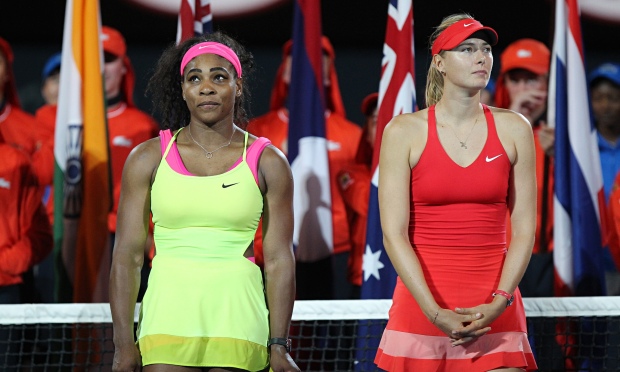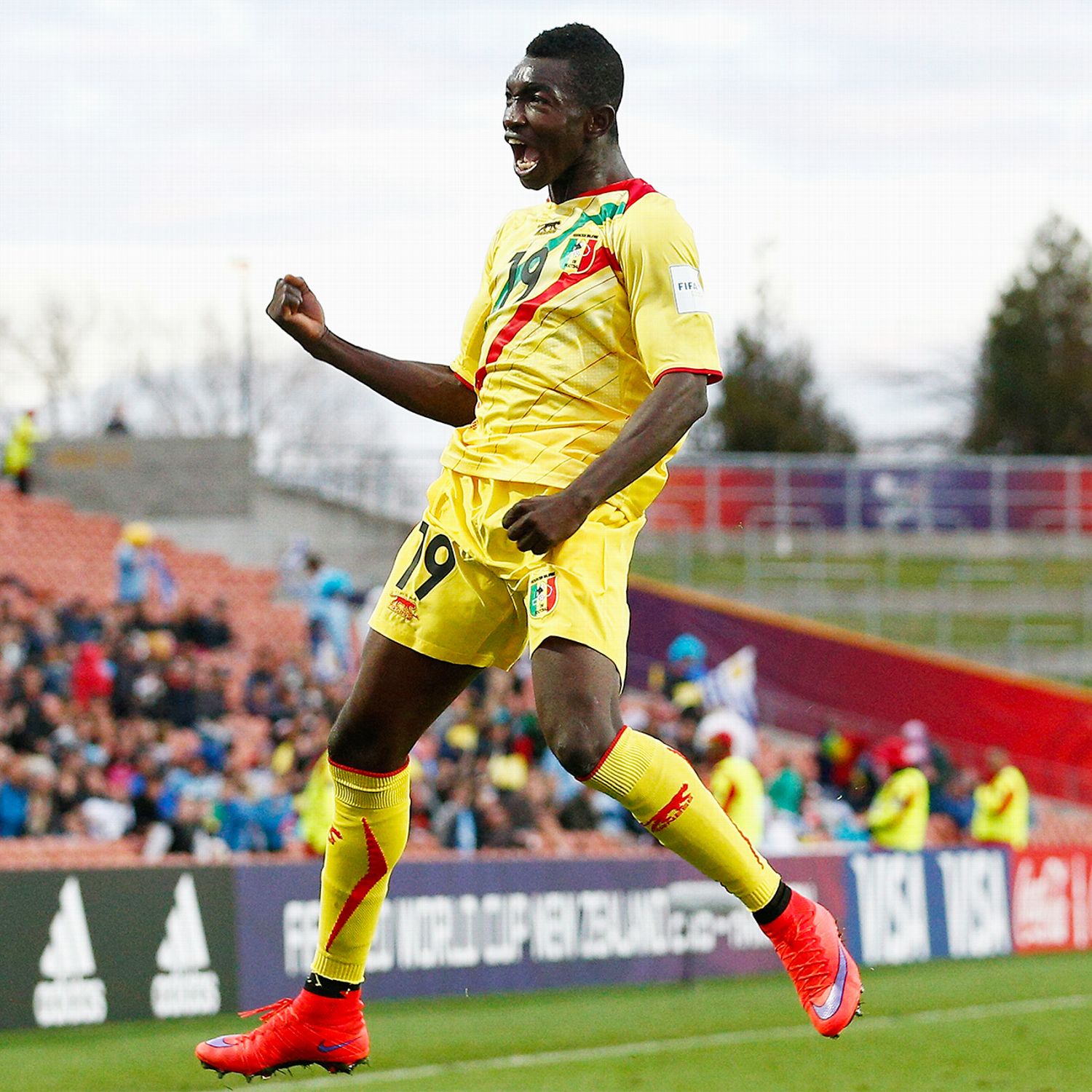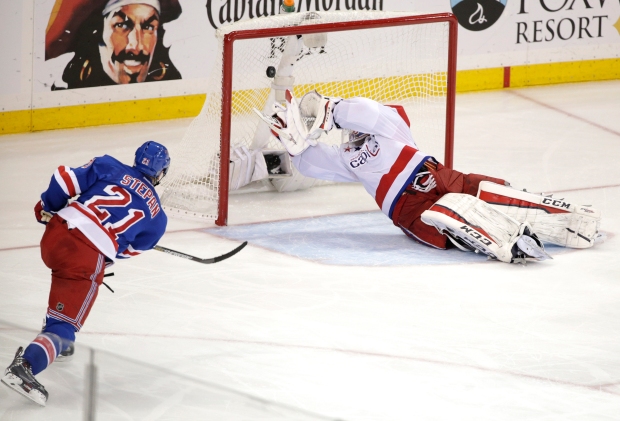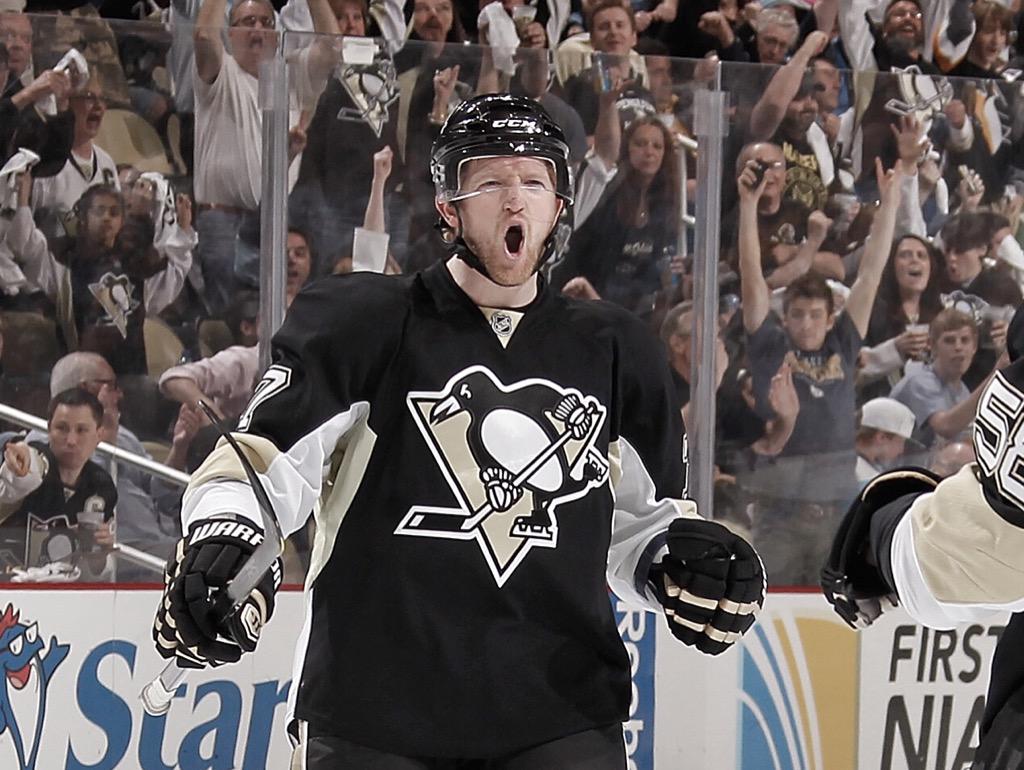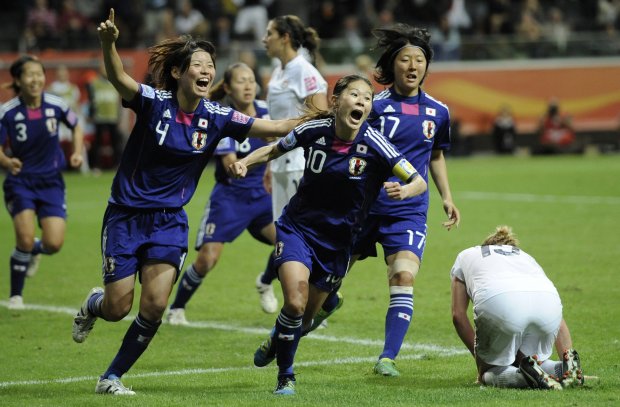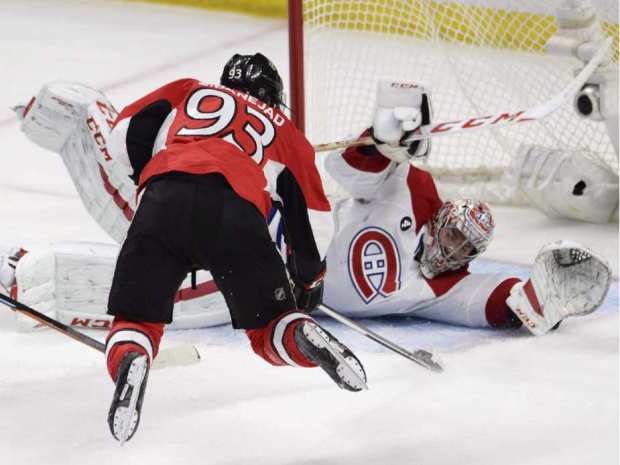The season of a professional tennis player is long, gruelling and, generally, a true carousel of emotions that change daily, from the joys and relief of victory to the soul-crushing reality of defeat. It’s, above all, a sequence of up’s and down’s, that gets reflected on the rankings, the confidence they display on court and the rewards they gather for all the hours of work put on away from the limelight.
This is true for the hundreds of players battling to survive on obscure tournaments played on every corner of the planet but also for the best in the world, which, as the stakes get higher, see the pressure to succeed intensify and the shortcomings pierced up unapologetically.
The 2015 season is approaching the stretch run with three Grand Slams already on the books and much has happened since the first week of January. This article aims to chronicle that journey for the most prominent figures in tennis, establishing a division between those who have met or surpassed the off-season’s expectations (the ups) and those who have hit rough patches, underperformed…or completely disintegrated (the downs).
I tried to keep a relative balance between the numbers on each side of the fence, but be advised that, like most people, I prefer to focus on who is excelling rather than in the struggling players.
As usual, I’ll start with the ladies, with the Men’s edition coming up, hopefully, later this month.
Garbiñe Muguruza (up)

Garbiñe Muguruza gazes at the sky after another triumph on the 2015 Wimbledon tournament
The Venezuelan-born player jumped into the spotlight in 2014, eliminating Serena at Roland Garros and ending the year just outside the top 20, and, this season, she seems to be realizing her enormous potential. The Spaniard has every tool necessary to aspire a future domination on the Tour and, at age 22, is just putting it all together. Her massive forehand is a great weapon and she’s aggressive and daring but also balanced enough to implement the necessary variances on her shots and decisions. These characteristics serve her well in every surface, which isn’t something usually encountered on other Spaniards, and Muguruza has produced steady performances throughout this season. For instance, she lost to the World Number one on the 4th round at Melbourne, saw a nice campaign in Roland Garros end on the quarters at the hands of a Lucie Safarova in a state of grace, and also went deep at Dubai before being dismissed by Pliskova on the semis.
Still, the result that vaulted her into the top 10 was achieved at Wimbledon, where she run through four higher-seeded players on the way to the final and a well-fought battle against Serena. Muguruza’s ascension on the rankings, where she’s currently 9th, is destined to continue over the next few months, with very few points to defend until the end of the season, and she looks poised to reward those who tipped her as a future leader of the WTA Tour due to a blend of strength, power, composure and all-around ability (expressed, for example, on four career WTA doubles titles). Right now, her singles résumé boasts only one WTA tournament victory, at Hobart last year, but it’s fair to say that’s just of matter of time until the accolades start to pile on.
Petra Kvitova (down)

Petra Kvitova’s campaign at the Australian Open ended earlier than expected.
It’s been a puzzling season for the 25-year-old. The Czech holds the distinction of being the only player on tour to beat Serena Williams this year, in route to an important triumph on the clay of Madrid, but that was definitely her only signature moment of the season. Kvitova has failed to go past the fourth round in every Grand Slam already contested this season, falling to Madison Keys at Melbourne Park and Timea Bacsinszky at Roland Garros, before spiralling down at Wimbledon when no one expected. In fact, the powerful lefty cruised past the first two rounds on her ideal grass-court tournament but, as soon as she faced some resistance, Kvitova couldn’t handle the mild challenge of Jelena Jankovic and saw her title defence end.
The two-time Grand Slam Champion started the season with a victory in Sydney but two consecutive losses to Carla Suarez Navarro at Doha and Dubai triggered a strange absence in Indian Wells and Miami, attributed to “exhaustion” until the recent diagnosis of mononucleosis. Kvitova’s illness has taken a toll on the Czech’s game effectiveness and her confidence has fluctuated more than ever, which influences the sharpness of her massive forehand and powerful lefty serve.
At his best, the only 1990’s-born player to win a Grand Slam is probably the only women equipped to overpower Serena, but her maddening inconsistency alternates moments of brilliance, like last year’s run at Wimbledon, with matches where she just can’t keep her haymakers inside the limits of the court. Until she solves that, the chances of climbing the rankings are limited and she’s susceptible to occasional drops out of the top 5. With the US Open coming up, where she has never reached the quarter-finals, it’s a complete coin flip which side of Kvitova will step on court in every game.
Timea Bacsinszky (up)
Two years ago, the 26-year-old Swiss was working on a hotel at a ski resort, determined to put a once promising tennis career on her back and mulling the decision to go back to school in order to get a management degree. Tired of several years struggling to fulfil the hopes of an overbearing father and fighting injuries, Bacsinszky lost motivation and passion for the game. Then, came an unexpected Wild Card to compete at the Roland Garros qualifying and she found the spark again. What followed was a long climb on the rankings that culminated on a top-50 finish in 2014.
The new season started with a highly-impressive run at Shenzhen stopped by Simona Halep on the final, after an early distinguished upset of Petra Kvitova, and Bacsinszky’s confidence soared. She was defeated by Garbine Muguruza on the third round of the Australian Open, an outcome that was, nonetheless, the farthest she had come in her career on a Grand Slam, and then made some headlines with two consecutive titles in Acapulco and Monterrey, stringing an undefeated run of 13 matches until Serena Williams triumphed on the quarter-finals of Indian Wells.

Timea Bacsinszky’s season has been one to remember
The clay season ahead of Roland Garros didn’t go as well, but, in Paris, the Swiss found some magic again, beating Kvitova for the second time on the season on her way to a final four finish. She forced Serena Williams to a third set before eventually falling, but her elegant, yet unusually tightly-gripped, backhand and propensity to play drop shot after drop shot left a mark, as did the unassuming and cool personality on court. Another deep run on a Grand Slam, ended by eventual finalist Muguruza in Wimbledon’s quarter-finals, ensued and the top-10 is already within reach for Bacsinszky, currently 13th on the WTA hierarchy but 10th on the race to the WTA Finals.
Maria Sharapova (down)
The indisputable number two player in the World has two titles to her name in 2014, in Brisbane and Rome, but that hasn’t removed a sour taste from her mouth. She underperformed, hampered by a leg injury, on the hard court tournaments of the spring, leaving Indian Wells at the hands of Flavia Pennetta on the round of 16, and Miami even earlier, beaten surprisingly by compatriot Daria Gavrilova. Later, a feisty Lucie Safarova ended her title defence at Roland Garros and Wimbledon saw another chapter of one of the most one-sided rivalries of this time.
Sharapova was dispatched in the semi-finals by Serena Williams and the Russian just seemed, once again, without answers to solve a riddle that has tarnished her legacy and career. It was the 17th consecutive defeat against the American, with the head-to-head record now standing at a lopsided 18-2 score line, and came just a few months after another painful loss at the Australian Open final. Until she finds answers and the right adjustments, Sharapova’s success and solid play overall will always be overshadowed by Serena.
She may have another opportunity in New York, and how sweet it would be to break the curse and shatter Serena’s calendar Slam ambitions at the same time?
Madison Keys (up)
The USA’s next generation of female players has graced the WTA Tour for a few seasons but the emergence of a clear leader of the pack has taken more time. Sloane Stephens ended 2014 on the cusp of the top 10 but she has fought wrist injuries over the last months and the consistency just hasn’t been there, whereas Coco Vandeweghe recently enjoyed a great run at Wimbledon and may be on the verge of putting it all together. Meanwhile, Christina McHale has taken more than expected to approach the top 20, which leaves 20-year-old Madison Keys, who has had one of the breakout performances of the year.

Madison Keys’ Australian Open performance kick-started her rise on the rankings
Lindsay Davenport’s pupil made the jump from a player fighting for a lower seed on a Slam towards a force to reckon on the second week, and that improvement is shown on the results amassed in 2015. She reached the semi-finals at the Australian Open, succumbing to Serena after overcoming the older Williams sibling, and wasn’t far from repeating that run at Wimbledon, coming up short on a winnable match against Agnieszka Radwanska. In Paris, the in-form Timea Bacsinszky took her out during a third round encounter but, seen as a whole, Keys’ Grand Slam performances can only be described as encouraging.
The Florida-native is currently the second youngest top-20 player on the Tour and her game is still maturing, with Keys figuring out the rights moments to push all the way forward with her powerful strokes or pull back a bit. To keep climbing the rankings, though, she will have to perform better outside of the big stages, as she only reached the last four in one other tournament this season (a lost final at Charleston), but her all-around game projects to be a mainstay at the top in the near future.
Lucie Safarova (up)

Lucie Safarova was the runner-up at Roland Garros
For years, the Czech has been one of the most consistent players in the circuit, finishing the last four seasons ranked in the top 30. However, it took until her 28th anniversary for Safarova to take a step forward and settle on the top 10, entering elite territory. Just notice that she reached the Quarter-Finals at the Australian Open in 2007 and had to wait until 2014 to equal that on a major, going one match further before getting outlasted at Wimbledon by eventual Champion Petra Kvitova. The Brno-native has always been a solid competitor, disturbing the opposition with an exquisite top-spinned forehand that isn’t usual on the Women’s tour, but the lack of confidence and self-belief has set her back multiple times. On this sense, becoming a major contender on the doubles tour since 2013, and having the chance to compete regularly on the last rounds of Grand Slams, may have contributed to a better mind-set.
Thus, the 2015 season has been the definitive breakthrough for Safarova, who tasted Grand Slam success alongside American Bethanie Mattek-Sands at the Australian Open and Roland Garros, and played her first major singles final in Paris, yielding to Serena Williams. The Czech took out four top 20 players (Lisicki, Sharapova, Muguruza and Ivanovic) during her scintillating run and fought off the nerves on several high-pressure situations, winning three tie-breaks along the way. Even if, outside of a title in Doha, Safarova’s season hasn’t been that impressive, with early exits at Indian Wells, Miami, Rome and the Australia Open, along with a 4th round defeat to Coco Vandeweghe at Wimbledon, she achieved a career-high ranking in June and his currently 7th on the WTA hierarchy. Athletic, aggressive and talented, the Czech has her first presence on the WTA Finals well within reach, although the fatigue accumulated by dispensing energies on doubles tournaments may take a toll as the season dwindles.
Eugenie Bouchard (down)
The Canadian’s tailspin during the 2015 season has been nothing short of remarkable. After reaching the 2014 Wimbledon final, Bouchard hit a rough patch during the latter part of the year, culminating on the dismissal of Nick Saviano, her long-time coach, but no one could predict the absolutely terrorizing display of the last few months. The 21-year-old reached the quarter-finals at the Australian Open just to be dismantled by Maria Sharapova, and since then has a dismal 4W-14L record, including nine first round exits, which plummeted her ranking. Not even the return to the grass courts, where her attacking, aggressive style thrived, made any difference, with Bouchard bowing out against a qualifier at Wimbledon.

A fair depiction of Eugenie Bouchard’s 2015 season
The breakout star of 2014 seems lost and in complete free fall, which is even stranger for a player that built her surge on a charming, bubbly personality and tremendous confidence on her abilities despite the inexperience. If she can’t find a way out of what looks like an existential crisis and regain the belief in her game, the former world number 5 can quickly fall out of the top 30 and the talk about Bouchard being a flash in the pan will increase. This would be a shame, since she just has too much talent to let that happen.
With the hard-court season starting, Bouchard, provided she gets over the abdominal injury that hailed her performance at Wimbledon, can make up some lost ground, since, outside of the US Open and Wuhan, she doesn’t have a lot of points to defend.
Victoria Azarenka (up)

Victoria Azarenka’s eagerness wasn’t enough to overcome Serena Williams at Wimbledon
The nagging left foot injury that derailed Azarenka’s 2014 season is finally on the rear view and the former World Number 1 can get back to challenge for the top tournaments. Actually, her journey back to the top 20, that she’s just re-entering, took more time than expected due to a series of unlucky draws that put the Belarusian on a collision course with Serena Williams both at Roland Garros (3rd round) and Wimbledon (quarter-finals). Both matches were intense battles settled on the decider, with Azarenka running out of gas to close out the rival after taking the first set, but proved that “Vika” fierceness is intact and she will quickly regain her place among the best. Azarenka also lost to Serena earlier in the year, at Madrid, and faced Maria Sharapova in Rome and Indian Wells, a maddening series of tough encounters to navigate.
However, Azarenka’s 22-9 record in 2015 is solid and, as she inches closer to the top, the ship will sail more smoothly, with the 26-year-old even vying for a chance to add some silverware, since she hasn’t secured a title in almost two years (Cincinatti, August 2013). The Minsk-native came close last February, at Doha, but was beaten by Lucie Safarova on the final. Soon, at the upcoming US Open, the two–time Australian Open Champion will be an underdog, hoping to reach the final of the tournament for the third time in her career (2012, 2013).
Simona Halep (down)
Coming off a breakthrough 2014 season, the Romanian star appeared to pick up where she left off after winning the Shenzhen tournament on the inaugural week of 2015. Although her game was broken apart by Ekaterina Makarova on the Australian Open’s quarter-finals, Halep’s season kept going strong through February and March, with the 24-year-old collecting the trophy at Dubai and, later, Indian Wells, the biggest triumph of her career. She pushed Serena to the edge on a delightful encounter in the semi-finals of Miami, ultimately failing to repeat the illustrious triumph on the WTA Finals last November, but solidified her claim for the number two spot on the rankings.
However, her form faded during the clay season, underlined by a one-and-out presence at Madrid, and a shocking defeat to veteran Mirjana Lucic-Baroni on the second round of Roland Garros, which brought uncertainty to Halep’s game. Another early exit on the first-round of Wimbledon, at the hands of 106th-ranked Jana Cepelova, confirmed that the Romanian is on a funk and a revolving door of coaches certainly doesn’t help.
The tiny counterpuncher is another top player experiencing a deficit of confidence but, unlike Kvitova, she just doesn’t have the weapons to overpower opponents and solve trickier problems quickly, relying, instead, on her baseline prowess and movement. Her strengths aren’t perfectly suited for the hard courts coming up but a decent performance at the US Open can put her back on track and stop the negative spiral. If, otherwise, the bad results linger, the pressure, especially coming from native Romania, will intensify and Halep can be in trouble, with a Bouchard-esque plunge not completely out of question.

Simona Halep leaves the court crestfallen after a defeat. An image seen many times over the last few months.
Carla Suárez Navarro (up)
The other Spanish player on the top 10 doesn’t carry the same level of expectations as Muguruza but has quietly put on the best season of her career. Suárez Navarro is currently 4th on the 2015 singles leaderboard, which determines the players qualified for the WTA Finals, because of a tremendously regular performance since the beginning of the season, expressed on reaching 11 quarter-finals (or best) in 16 tournaments entered. The tiny Las Palmas-native, though, hasn’t yet been able to conquer the second title of her career, having lost the finals at Antwerp, Miami and Rome, and her performance on the Grand Slams has to considered an unmitigated disaster, losing on the first round at the Australian Open and Wimbledon, and on the third at Roland Garros.
Suarez-Navarro is known for a striking one-handed backhand, that is all almost extinct on the women’s tour and creates uncanny difficulties for her opponents, but her lack of punch and suspicious serve usually holds her back against more powerful foes. Like most of her compatriots, she likes to fight for every ball along the baseline but lacks the weapons to be considered a true contender for a major triumph in the future. Close to being 27 years old, her stay on the top 10 promises to be brief, because there’s just too much talent coming up and eyeing for those positions. The top-20 placement she held over the last two seasons is more in order with her potential.
Serena Williams (up)
How nice is Serena Williams’ professional life right now? She hand-picks the tournaments she wants to appear on, racks up wins at will, collects trophies and walks away when she decides an event isn’t worth the effort. In 2015, she has a 37-1 record in the WTA Tour over just 8 tournaments, adding four titles to her illustrious résumé and pulling out in Bastad, Rome and Indian Wells, a tournament she returned to several years later. An in-the-zone Petra Kvitova defeated her on the clay of Madrid but not even multiple health issues prevented the successful completion of the “Serena Slam” Part II, twelve years after the first.

Serena Williams and the 2015 Wimbledon trophy. Her 21st singles Grand Slam title.
She triumphed at the Australian Open despite a persistent cough, and managed to find a way towards the title on the clay of Paris, although flu-like symptoms hindered her performance during five third-set encounters. At Wimbledon, she was fit but the road wasn’t easier, since she saw off a perilous situation on the third round against home favourite Heather Watson, and then strode through three former world Number one’s (Venus, Azarenka and Sharapova) before harnessing Muguruza to clinch her fourth consecutive Grand Slam. Now, it’s time for the definitive challenge, the chance to become the first person in 27 years, and only fifth ever, to claim the calendar Slam.
The US Open will be a pressure-cooker for the 33-year-old but it’s already pretty much unanimous that the only person that can beat Serena Williams is herself, which is incredible after overcoming injuries, the fatigue of a 17-years professional career (and counting), and a field full of hungry, young candidates to her throne. Besides sweeping the Majors in 2015, Serena is also looking to tie Steffi Graf’s 22 Grand Slams and inch even closer to Margaret Court’s record of 24. Thus, the revamped Arthur Ashe stadium will be roaring anticipating history and Serena can further cement her case as the best women’s player of all-time and a female American athlete almost without parallel.
Quick(er) strikes:
Agnieska Radwanska (down)
The crafty Radwanska struggled badly early on, failing to get some juice from the appointment of Martina Navratilova as her new coach. The dismal start, where she reached the quarter-finals only twice until July (Doha and Katowice), was surpassed after hitting rock bottom with a first round loss at Roland Garros, but not soon enough to avoid the split with the Czech-born tennis legend. The improvement came in the form of a semi-final at Nottingham and a final at Eastbourne, which precluded a last four berth at Wimbledon, where Muguruza was stronger. Nonetheless, Radwanska was still clinging to her 7th place on the rankings recently and a fifth consecutive presence on the WTA Finals is not out of reach, even if she’ll need to somehow replace the 900 points of last year’s win at the Rogers Cup.
Karolina Plískova (up)
The 23-year old has recently joined compatriots Petra Kvitova and Lucie Safarova on the top 10 after impressing at several points during the season. She has already played five finals in 2015 (Sydney, Dubai, Prague, Birmingham and Stanford) and, in spite of coming out on top only on home soil, certainly became someone to be counted on. A lanky, big-hitter on the mould of Kvitova, the Czech was bounced early on every Grand Slam this season, but her break out on a major stage is expected to arrive shortly.

Karolina Plískova (L) and Angelique Kerber (R) after the final of Stanford
Angelique Kerber (up)
Following a breakthrough season in 2012, which Kerber ended as a top 5 player, the German slowly removed herself from frontline contention for the biggest tournaments, even though she concluded 2013 and 2014 still ranked on the top 10.
Despite being another player that has failed to leave a mark on the Grand Slams in 2015, with a first round loss at Australia followed by two third-round setbacks in Paris and London, the 26-year-old has made for it on other events, already collecting more trophies this year than in all the previous combined. She triumphed on the clay of Charleston and Stuttgart, the grass of Birmingham, and the hard courts of Stanford to put herself in position to get back into the top 10 on the WTA rankings while securing a sixth place on the race to the Finals.
Elina Svitolina, Belinda Bencic (up)
Outside of Madison Keys, Svitolina and Bencic are the youngest players ranked on the top-20. The 21-year-old Ukrainian won the junior title at Roland Garros at the age of 15 but took some time to find her footing on the professional circuit, cracking the top 50 in 2013 before asserting her talent during this season. For instance, at the beginning of the year, she went to the semis in Brisbane before succumbing to Maria Sharapova, and made Serena Williams play a third set on the third round meeting at the Australian Open. Later, on the end of April, she conquered her third WTA title, at Marrakech, and went on to reach the first quarter-finals on a Grand Slam in the clay of Roland Garros, although the grass season was less impressive, with a single win in two tournaments. She started the hard court summer season with a nice run at Stanford, stopped by Kerber on the semis, and may be in line for even better things until the end of 2015.
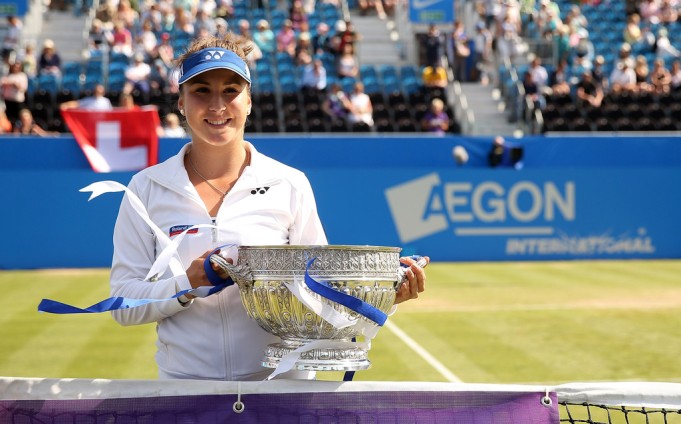
18-year-old Belinda Bencic with the trophy at Eastbourne, her maiden WTA Tour title
Meanwhile, Swiss Belinda Bencic became, with 18 years and 5 months, the most precocious top-20 player since Caroline Wozniacki in 2008. After reaching the Quarter-finals of the US Open in 2014 and being named the Newcomer of the Year, the up-and-coming Bencic won her first title at Eastbourne last June, leaving Keys, Bouchard, Wozniacki and Radwanska behind on the way to the trophy, and also played the final at ‘S-Hertogenbosch, missing out in favour of Camila Giorgi. She was beaten by Madison Keys on the second round of Roland Garros and Victoria Azarenka on the fourth at Wimbledon, but the best Swiss female prospect since Martina Hingis has already shown flashes of brilliance. With a similar playing style to her compatriot, including the versatility and a fondness for the tactical side of the game, Bencic can dream of becoming, one day, the best player in the World and, maybe, match Hingis’s five career singles Grand Slams.
(Come back for the ATP edition by the end of the month, before the start of the US Open)
